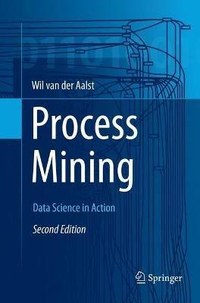This is the second edition of Wil van der Aalst's seminal book on process mining, which now discusses the field also in the broader context of data science and big data approaches.
It includes several additions and updates, e.g. on inductive mining techniques, the notion of alignments, a considerably expanded section on software tools and a completely new chapter of process mining in the large. It is self-contained, while at the same time covering the entire process-mining spectrum from process discovery to predictive analytics.
After a general introduction to data science and process mining in Part I, Part II provides the basics of business process modeling and data mining necessary to understand the remainder of the book.
Next, Part III focuses on process discovery as the most important process mining task, while Part IV moves beyond discovering the control flow of processes, highlighting conformance checking, and organizational and time perspectives.
Part V offers a guide to successfully applying process mining in practice, including an introduction to the widely used open-source tool ProM and several commercial products.
Lastly, Part VI takes a step back, reflecting on the material presented and the key open challenges. Overall, this book provides a comprehensive overview of the state of the art in process mining. It is intended for business process analysts, business consultants, process managers, graduate students, and BPM researchers.
